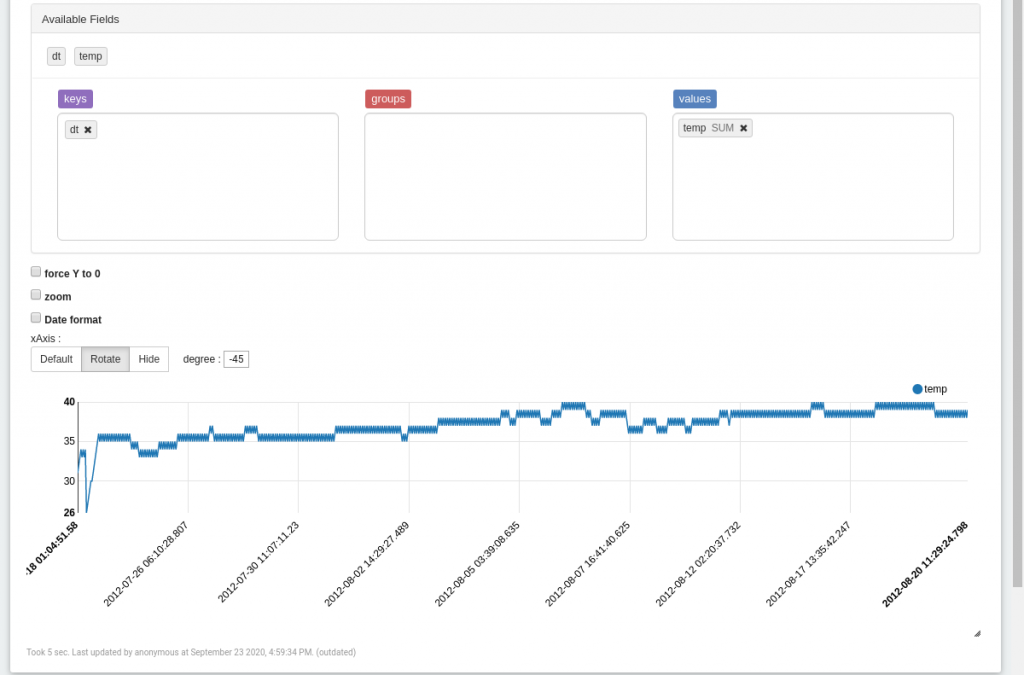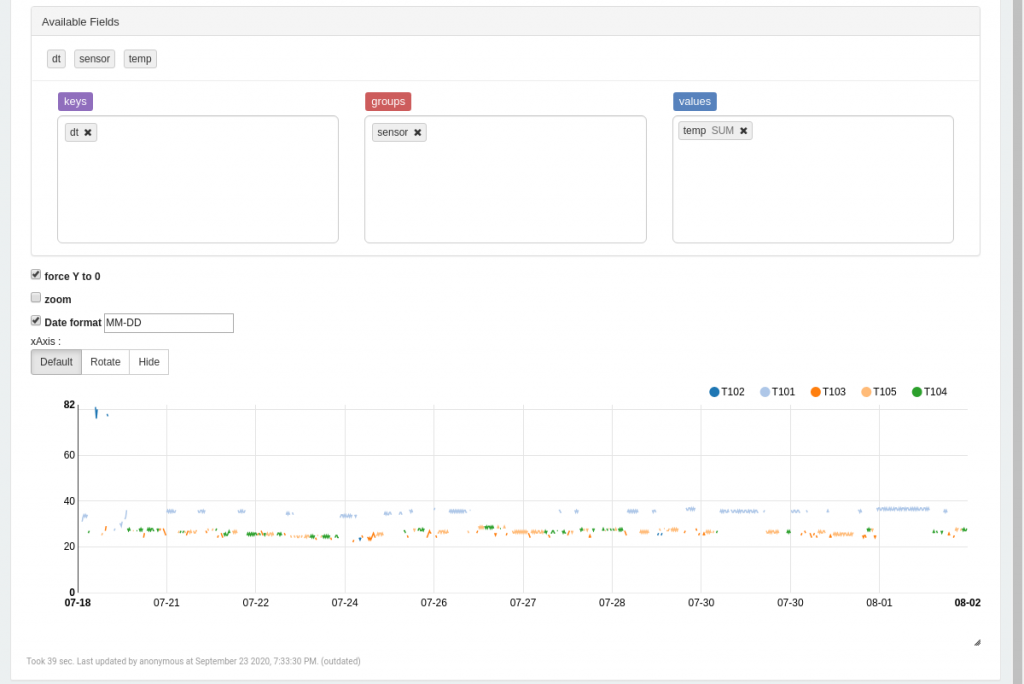# Data Visualization using Apache Zeppelin
In our final tutorial using the CASAS dataset, we demonstrate the flexibility of Zeppelin with it's ease of visualization. In case you missed the first tutorial on ingesting Casas dataset with Kafka, it is available here and the tutorial exmaing the data set with JayDeBeApi and Jupyter Notebook is here.
# Setup
We start off by downloading binary Zeppelin package with bundled with all of its interpreters from an Apache mirror (opens new window). The file is 1.5GB, so patience is required. After the download is complete, you can untar and start Zeppelin.
tar zxvf zeppelin-0.9.0-preview2-bin-all.tgz
cd zeppelin-0.9.0-preview2-bin-all/
bin/zeppelin-daemon.sh start
With Zeppelin started, head over to http://localhost:8080/ (opens new window) to get
started. In order for PySpark to use the GridDB JDBC driver, it must be
added to the CLASSPATH. Todo this, click on the menu in the top right
corner, then interpreters. From that page, scroll down to "Spark" and
click "edit". Then scroll down to Dependencies and add an Artifact which
is the path to your gridstore-jdbc.jar. If you've followed the JDBC
Blog (opens new window),
it will be /usr/share/java/gridstore-jdbc.jar.
# Single Sensor
To start off with, we're going plot a single temperature sensor. It's a
fairly straight forward query, the only complexity being that we need to
convert the message column to an integer as it's stored as a string in
GridDB.
%spark.pyspark
from pyspark.sql import functions as F
from pyspark.sql.types import *
df = spark.read.format("jdbc").option("url", "jdbc:gs://239.0.0.1:41999/defaultCluster/public").option("user", "admin").option("password", "admin").option("driver", "com.toshiba.mwcloud.gs.sql.Driver").option("dbtable", "csh101_T101").load()
The data is loaded one long call that specifies the JDBC URL, username, password, driver, and container (aka, "dbtable").
df = df.withColumn("temp", df["message"].cast(IntegerType())).drop("sensor").drop("translate01").drop("translate02").drop("message").drop("sensorActivity")
The above code adds a new column temp which is based on casting the
"message" column to an IntegerType and then we drop the remaining
columns except for dt as they are not required for the visualization.
z.show(df)
Finally, we use Zeppelin's visualization function, z.show() to plot a
graph. To plot the graphs properly, we needed to drag and drop the
temp field into the values as shown below:

# Multiple Sensors
%spark.pyspark
from pyspark.sql import functions as F
from pyspark.sql.types import *
from functools import reduce
from pyspark.sql import DataFrame
tdf = spark.read.format("jdbc").option("url", "jdbc:gs://239.0.0.1:41999/defaultCluster/public").option("user", "admin").option("password", "admin").option("driver", "com.toshiba.mwcloud.gs.sql.Driver").option("query", "select * from \"#tables\"" ).load()
tdf = tdf.filter(F.col("TABLE_NAME").startswith("csh101_T"))
In this example we query a table using .option("query",) instead of a loading an entire table and then filter the results so we are only fetching tables that begin with "csh101_T" or all of the temperature sensors at the Casas 101 site.
df_names = []
dfs = []
for f in tdf.rdd.collect():
table = f["TABLE_NAME"]
df_names.append(table)
rawdf = spark.read.format("jdbc").option("url", "jdbc:gs://239.0.0.1:41999/defaultCluster/public").option("user", "admin").option("password", "admin").option("driver", "com.toshiba.mwcloud.gs.sql.Driver").option("dbtable", table).load()
dfs.append(rawdf.withColumn("temp", rawdf["message"].cast(IntegerType())).drop("translate01").drop("translate02").drop("message").drop("sensorActivity"))
outdf = reduce(DataFrame.unionAll, dfs)
z.show(outdf.orderBy(outdf.dt.asc()))
With a list of the temperature sensor names, we query the individual
sensor containers/tables before merging them and using the Zeppelin
display function to show them. Now within the Zepplin visualization
tool, we drag and drop sensor to the Group list box and temp to the
Values list box as seen below:
 The Zeppelin notebook can be downloaded
here (opens new window).
The Zeppelin notebook can be downloaded
here (opens new window).
